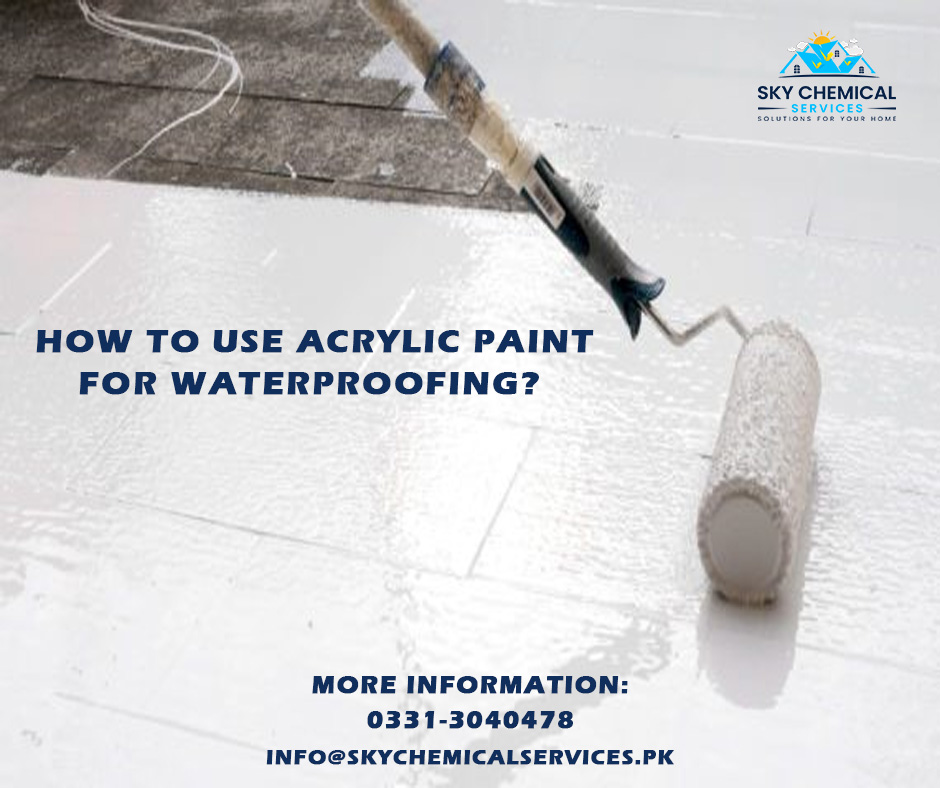
Acrylic paint has become a preferred medium for painters and crafters due to its brilliant colors. But did you know that it can also be used on other surfaces for waterproofing. Let’s delve into the intriguing realm of acrylic paint and see how it can transform closed structures into attractive places.
Understanding Acrylic Paint
Let’s take a minute to comprehend the essential qualities of acrylic paint before moving on to the waterproofing procedure. Acrylic paint is a water-based media composed of pigments suspended in an emulsion of polymers. When applied to a surface, it dries quickly and creates a flexible, water-resistant layer. It is the best choice for waterproofing work due to its water resistance attribute.
When it comes to waterproofing, not all acrylic paints are made equal. Choose acrylic paints with superior adhesion, durability, and water resistance, such as artist-grade or high-quality. To achieve optimal performance, look for paints labeled “waterproof” or “water-resistant.” Acrylic paints have higher water-resistant qualities; select one that offers a glossy or satin finish.
Read More
How Many Layers of Waterproofing Should be Applied?
What is Crystalline Waterproofing? How is it Applied?
How to Waterproofing Your Walls?
Strategies for Application
Applying acrylic paint is the exciting part! Use a variety of strategies based on your project and intended results. Here are a few techniques:
Cleaning the Surface
Surface preparation is essential for achieving a good result. Thoroughly clean the surface to get rid of any dust, debris, or grease that might hinder the paint’s adherence. Sanding or priming may be required to improve paint adherence for some surfaces. Use a sealer for the porous surfaces, such as wood or natural stone.
Application
- Apply thin layers of acrylic paint in uniform, smooth strokes using a high-quality brush, letting each coat dry before reapplying. This method produces a waterproof covering that improves the paint’s ability to restrict water intrusion.
- Use an airbrush or spray gun to apply acrylic paint if you’re using it on a stretched surface. To ensure a smooth coat, be careful to adhere to the manufacturer’s recommendations for the best air pressure, thinning ratios, and technique.
- Dip or Immersion Method: Ideal for smaller objects or items with intricate details, the dip or immersion method involves submerging the object in a mixture of acrylic paint and a suitable medium (e.g., water, varnish, or fabric medium). Allow the object to dry completely before handling.
- Waterproofing with acrylic paints will increase the durability of your furniture. It will provide a strong barrier against moisture and UV deterioration on wooden chairs, tables, and even plastic furniture.
Read More
How Basement Waterproofing Can Stop Termites?
Concrete Foundation Waterproofing: A Complete Guide
Bathroom Waterproofing: What You Need to Know
Finishing & Sealing
To protect your newly painted surface, apply a sealant. Acrylic sealants are easily accessible in spray or brush-on versions. Choose a clear, waterproof sealer suitable with acrylic paint, and follow the manufacturer’s recommendations for application. Ensure covering, paying particular attention to exposed edges and high-traffic areas.
How Long Does Acrylic Paint Stay Wet?
The drying process of acrylic paints varies depending on factors, such as thickness, humidity, and airflow. Under normal conditions, acrylic paint can dry to the touch within 10 to 20 minutes. However, the paint may remain tacky or soft for several hours. It takes approximately 24 hours for acrylic paint to fully cure and become usable.
Remember that the thicker layers of paint or areas with high humidity can prolong the drying time. To expedite drying, use electrical appliances or additives like acrylic mediums.
Conclusion
Hire experts from Sky Chemical Services for an acrylic paints job. Remember that the secrets to success are good surface preparation, premium acrylic paint, and efficient application methods. Now that your artistic endeavors and do-it-yourself creations can resist the effects of time and the elements, appreciate your creativity. Happy waterproofing!
